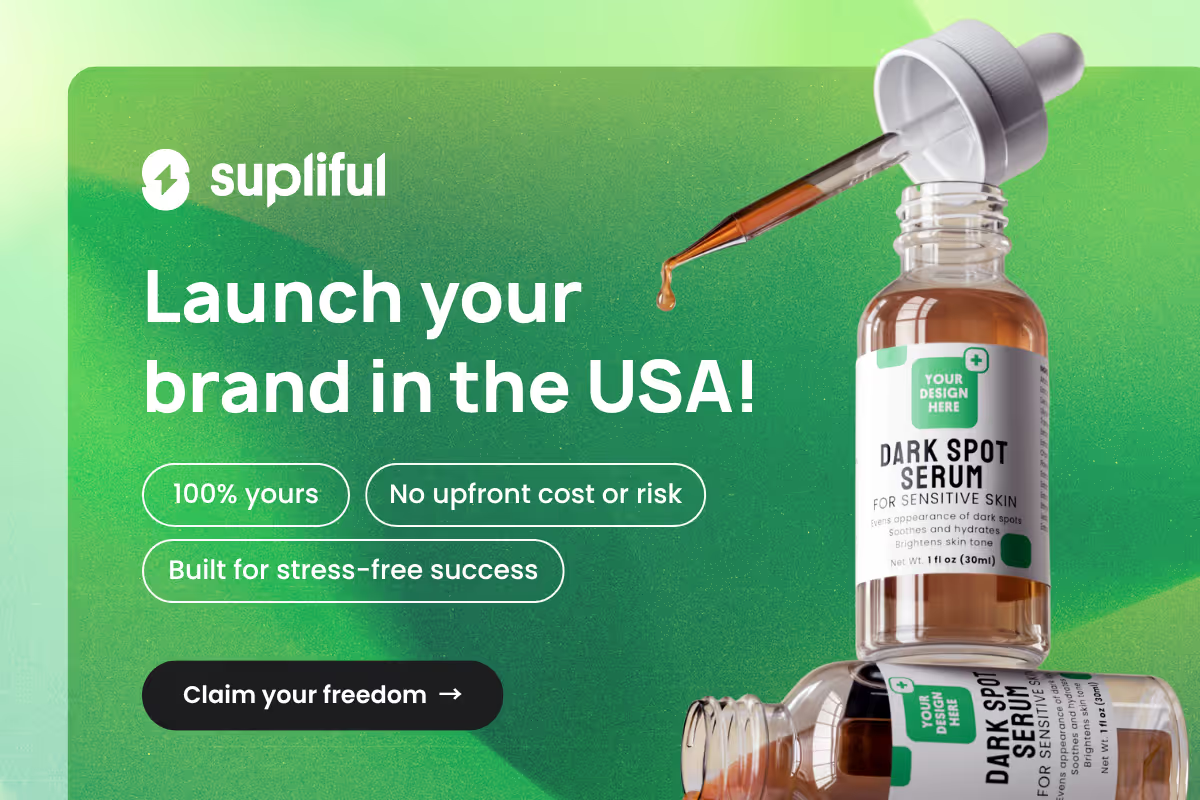.avif)
The pet product industry is booming, with spending expected to hit $350 billion by 2027. As more owners splurge on their pets, competition in this space keeps rising. Brands must work smarter to capture attention, especially online.
That’s where how to use SEO for pet products marketing effectively becomes crucial. With smart strategies, pet brands can boost visibility, drive traffic, and win loyal customers. SEO ensures your brand doesn't get lost in the noise.
Without strong SEO, even great products may never be found by eager pet parents. Investing in optimization now can set your business apart and build long-term success.
Essential SEO Strategies for Pet Products Marketing

The foundation of any successful pet product marketing strategy begins with understanding how to leverage SEO correctly.
Unlike paid advertising that stops working the moment you stop paying, SEO creates sustainable, long-term visibility that continues to deliver results over time.
Comprehensive Keyword Research for Pet Products
Keyword research is the cornerstone of effective SEO for pet products. Start by identifying terms your potential customers use when searching for products like yours:
- Primary keywords: These include broad terms like "dog treats," "cat toys," or "pet supplements."
- Long-tail keywords: More specific phrases such as "grain-free dog treats for puppies" or "interactive puzzle toys for cats" typically have lower competition but higher conversion rates.
- Local keywords: Terms like "pet stores near me" or "dog accessories in [city name]" if you have a physical location.
Use tools like Google Keyword Planner, Ahrefs, or SEMrush to identify relevant keywords with good search volume and manageable competition.
Pay special attention to search intent—understanding whether searchers want to buy products, research options, or find general information.
Pro tip: Look for seasonal pet keyword trends. Searches for items like "dog cooling mats" spike in summer months, while "pet winter coats" trend in colder seasons.
Planning content around these seasonal shifts can capture significant traffic when the competition isn't prepared.
On-Page SEO Optimization for Pet Product Pages
Once you've identified your target keywords, it's time to optimize your product pages:
Title Tags and Meta Descriptions
Write compelling title tags (under 60 characters) that include your primary keyword and clearly state the benefit of your product, such as "Organic Dog Treats: Grain-Free & Protein-Rich for Healthy Pups."
Meta descriptions should be under 160 characters and include a concise value proposition with a call-to-action that encourages clicks, like "Discover all-natural, vet-approved dog treats made with human-grade ingredients. Shop now for healthier, happier pets!"
Product Descriptions That Convert
Your product descriptions need to balance SEO requirements with compelling copy that sells:
- Include your primary and secondary keywords naturally within the text
- Focus on benefits rather than just features (how the product improves your customer's and their pet's life)
- Use bullet points to highlight key selling points for easy scanning
- Add specific details about ingredients, dimensions, or usage instructions
For example, rather than just stating "This dog bed is comfortable," explain how "The orthopedic memory foam relieves joint pressure, providing comfort for senior dogs or pets with arthritis."
Optimized Images and Videos
Pet products are highly visual—customers want to see what they're buying for their beloved animals. Optimize your media by:
- Using descriptive, keyword-rich file names before uploading (e.g., "organic-chicken-dog-treats.jpg" instead of "IMG12345.jpg")
- Adding alt text that describes the image while incorporating relevant keywords
- Compressing images for faster page loading speeds
- Including product videos that demonstrate usage or benefits, which can increase conversion rates by up to 80%
Creating Pet-Focused Content Marketing
Content marketing amplifies your SEO efforts by establishing your brand as an authority in the pet space.
The Pet Product Blog Strategy
Develop a blog that addresses common pet owner questions, concerns, and interests. Topics might include:
- Product guides (e.g., "How to Choose the Right Dog Harness for Your Dog's Size and Breed")
- Pet care tips (e.g., "5 Ways to Keep Your Cat Entertained While You're at Work")
- Ingredient spotlights (e.g., "The Benefits of Omega-3 Fatty Acids in Pet Food")
Each blog post should target specific keywords while providing genuine value to readers. Link to relevant products naturally within the content to drive conversions.
For businesses looking to scale their pet product offerings, private label pet products can be an excellent way to expand their catalog without the complexities of manufacturing.
Video Content for Pet SEO
Pet videos are highly shareable and engaging. Create content showing:
- Product demonstrations
- Before and after results
- Customer testimonials with their pets enjoying your products
- Educational content about pet care related to your products
Optimize videos with keyword-rich titles, descriptions, tags, and transcripts to maximize their SEO value.
Technical SEO Considerations for Pet E-commerce Sites
Even the best content won't perform well if your site has technical issues:
Mobile Optimization
With over 60% of searches now happening on mobile devices, ensure your pet product website is fully responsive and provides an excellent mobile shopping experience.
Site Speed Optimization
Pet owners won't wait for slow sites to load. Compress images, leverage browser caching, and minimize code to keep your site running quickly. Each second of delay can reduce conversions by up to 7%.
Schema Markup for Pet Products
Implement product schema markup to help search engines understand your product information and potentially display rich snippets in search results. Include details like:
- Price
- Availability
- Reviews
- Product dimensions
- Age recommendations for pets
Building Authority in the Pet Industry Through SEO
Establishing your brand as an authority in the pet space requires more than just on-site optimization.
Quality Backlink Building for Pet Websites
Earning backlinks from reputable pet industry websites signals to search engines that your content is valuable and trustworthy:
- Guest posting: Write informative articles for popular pet blogs or magazines
- Collaborate with pet influencers: Partner with pet influencers for reviews and mentions
- Create shareable infographics: Develop visual content about pet statistics or care tips
- Get listed in pet directories: Ensure your business appears in industry-specific directories
Leveraging User-Generated Content
Encourage customers to create content featuring your products:
- Customer reviews with photos of their pets using your products
- Social media contests where customers share pictures of your pet products
- Testimonial videos showing real results
User-generated content creates natural keyword variations and authentic engagement signals that search engines value.
Learning how to market products online effectively can significantly complement your SEO efforts, especially when working with limited budgets.
Local SEO for Brick-and-Mortar Pet Businesses

If you have a physical pet store or service location, local SEO is essential:
- Google Business Profile: Create and optimize your listing with accurate information, photos of your store and products, and encourage customer reviews
- Local citations: Ensure consistent NAP (Name, Address, Phone) information across all online directories
- Local keywords: Incorporate location-specific terms in your content and metadata
- Local backlinks: Earn links from local business associations, chambers of commerce, and community websites
E-commerce Platform-Specific SEO for Pet Products
Different e-commerce platforms have unique SEO considerations:
Shopify SEO for Pet Products
Shopify makes basic SEO accessible but requires attention to details like:
- URL structures (avoid duplicate content issues)
- Implementing canonical tags
- Using Shopify apps for advanced SEO functionality
Amazon SEO for Pet Products
If selling on Amazon, optimize for its A9 algorithm by:
- Researching Amazon-specific keywords using tools like Helium 10 or Jungle Scout
- Creating benefit-focused titles with main keywords
- Utilizing all available image slots with high-quality product photos
- Generating positive reviews through excellent customer service
Etsy SEO for Handmade Pet Products
For handmade or unique pet items on Etsy:
- Use all 13 available tags with relevant keywords
- Create descriptive titles that include what, who, and why (e.g., "Personalized Dog Collar with Name Tag for Large Breeds, Waterproof")
- Refresh listings regularly to signal activity to Etsy's algorithm
Measuring Pet Product SEO Success
Implement analytics to track performance and make data-driven decisions:
- Set up Google Analytics and Search Console to monitor traffic, keyword rankings, and user behavior
- Track conversion rates for different product pages and optimize underperforming ones
- Monitor competitor rankings for target keywords and identify opportunities
- Analyze seasonal trends to plan content and promotions accordingly
Adapting SEO for Different Pet Niches
Different pet markets require tailored approaches:
Dog Product SEO
The dog market is the largest pet segment, but also the most competitive. Focus on specific breeds, ages, or health concerns to target more defined audiences with less competition.
Cat Product SEO
Cat owners often research products extensively before purchasing. Create detailed comparison content and emphasize safety and quality in your SEO strategy.
Exotic Pet Product SEO
For reptiles, birds, or small mammals, target highly specific terms and position your content as educational, as these pet owners often seek specialized knowledge.
Future-Proofing Your Pet Product SEO Strategy
Stay ahead of changes in search algorithms and user behavior:
- Voice search optimization: Use natural language phrases as voice searches become more common ("What's the best dog food for a senior Labrador?")
- Video SEO: Continue investing in video content as search engines increasingly prioritize video results
- E-A-T principles: Demonstrate Expertise, Authoritativeness, and Trustworthiness in all content
- Mobile-first approach: Prioritize mobile experience, as Google now indexes the mobile version of websites first
Turning SEO Success Into Pet Business Growth
After implementing these strategies, you should start seeing improvements in your search visibility and traffic. Now it's time to maximize this opportunity:
- Conversion rate optimization: Test different product page layouts, calls-to-action, and checkout processes to convert more visitors
- Email marketing integration: Capture visitor information for nurturing campaigns
- Retargeting: Use pixel tracking to reconnect with visitors who didn't purchase
- Product expansion: Use search data to identify opportunities for new pet products based on underserved keywords
For businesses looking to expand their product lines, exploring the pet product catalog can provide inspiration and opportunities for growth.
SEO Power Move: Match Search Intent, Not Just Keywords
Ranking isn't just about stuffing pet keywords—it’s about meeting people where they are in their buying journey. The smartest pet brands don’t chase traffic—they align with intent.
- Understand the Why Behind the Search: Is your customer looking to buy, compare, or learn? A search like “best dog food for sensitive stomachs” isn’t transactional—it’s investigative. Serve up educational content first, and the sale comes naturally later.
- Create Intent-Matched Content Hubs: Build content for each stage—intro guides for early research, comparison tables for mid-funnel, and optimized product pages for ready-to-buy traffic. Each page becomes a stepping stone toward trust (and conversion).
- Beat Competitors with Relevance: Google favors content that answers user needs better—not just faster. If you address real questions with clarity and depth, even a smaller site can outrank big players.
- Structure for UX and SEO: Use clean headers, visuals, and rich snippets like FAQs or reviews. It makes your content skimmable, sharable, and more likely to win featured snippets.
When your SEO strategy matches what real customers are actually looking for, traffic doesn’t just rise—it converts.
Let SEO Do the Heavy Lifting for Your Pet Business
Effective SEO for pet products requires consistent effort and adaptation. The strategies in this guide offer a solid framework to boost visibility and connect with pet owners actively searching for products like yours.
SEO is an ongoing process, not a one-time task. Start with keyword research, on-page optimization, and technical SEO, then refine and expand as your business grows.
By investing in SEO now, you're building a sustainable marketing channel that will yield long-term results.
FAQ
Related blogs

Influencer Pricing Calculator: Find Your Fair Rate for Posts, Reels & Stories
.avif)
How To Market Pet Products Through Storytelling: Win Attention, Build Trust, and Boost Sales Naturally
.avif)
How To Market Coffee To Gen Z: The High-Impact Blueprint Every Brand Needs
.avif)

